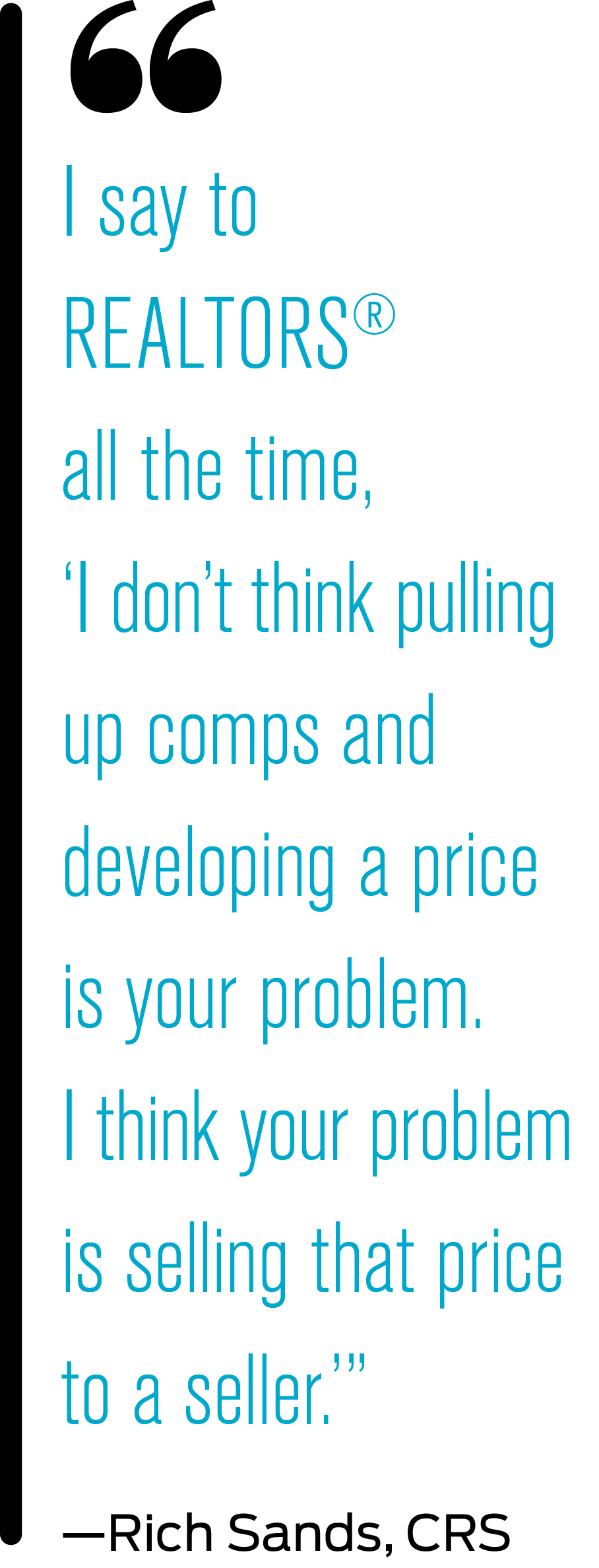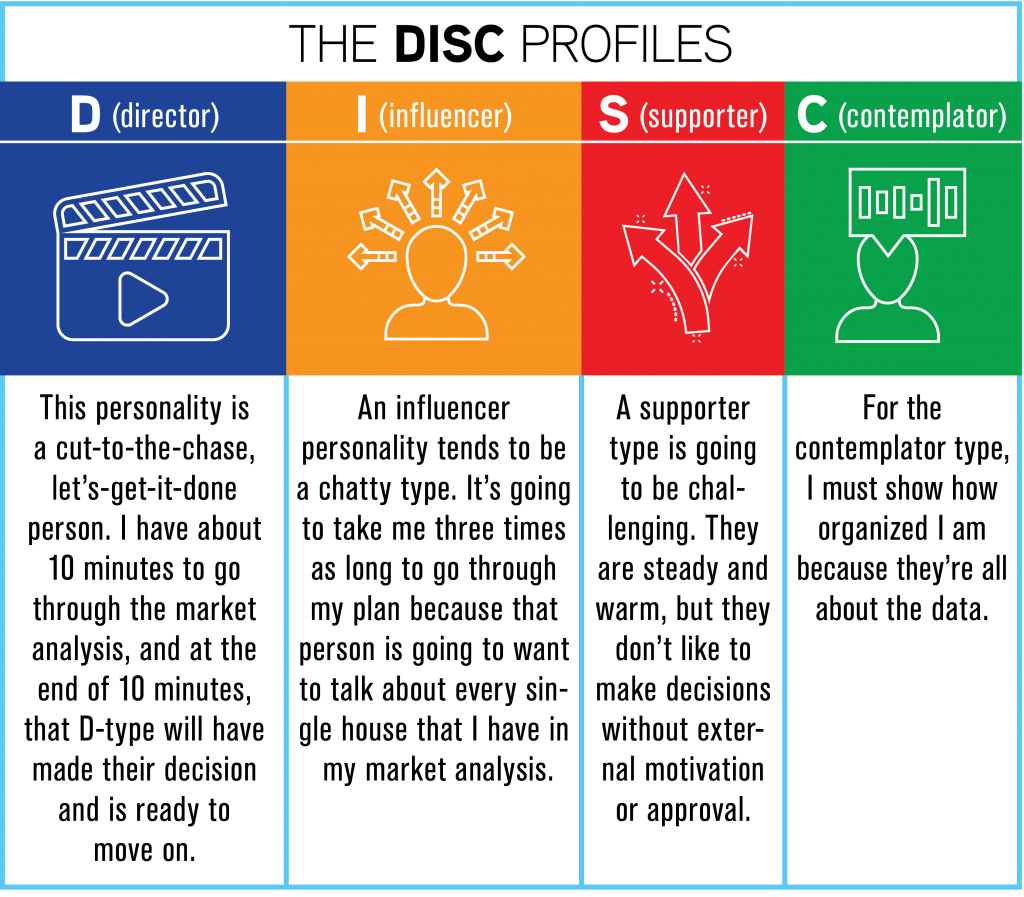By Rich Sands, CRS
When I am working with agents in my class on pricing strategies, Pricing Is Paramount, they get an opportunity to interact with their fellow students in small groups to really get a handle on the nuts and bolts of the pricing process. Controlling that process will determine whether you get that listing. I say to REALTORS® all the time, “I don’t think pulling up comps and developing a price is your problem. I think your problem is selling that price to a seller.”
 The content in this class breaks down into a few important areas, two of which are knowing how to read your seller to present a case that will appeal to them, and demonstrating your mastery of the market.
The content in this class breaks down into a few important areas, two of which are knowing how to read your seller to present a case that will appeal to them, and demonstrating your mastery of the market.
A lot of agents struggle with an effective, relevant method to present the state of the market to a seller. Some of this can be laid at the feet of office managers and brokers who take a “this is how we’ve always done it” approach to getting listings. But in today’s world, I don’t think that makes us nearly as effective.
If the 1980s were the era of the “me generation,” we have blown way past that in the last decade or so. Today, it’s all about how to serve customers in the age of Amazon. In Ron Willingham’s book, The Inner Game of Selling, he asserted that most people have been taught to sell the way they’re comfortable selling. Instead, he said, people need to learn to sell the way people want to buy.
One way to achieve that is to understand buyers’ and sellers’ personalities through the DISC profiles. Getting a grip on these broad personality types can help any agents who are stuck with a one-size-fits-all approach to their pricing.

I also emphasize to agents that the more effectively they have positioned themselves as the market expert, the more likely the pricing negotiation is going to go in their favor. Agents need to be able to localize their impression of the market. There are mini markets within the larger market—especially in cities and suburbs—where the mini market is hotter than the market overall, and there are also places where it’s colder. Agents must stop simply accepting the big picture and the big stats. They need to drill the hole deeper—not make it wider.
In the end, the pricing decision is not mine, anyway. It’s not my house. It’s not my money. If they don’t like what I say, they can find somebody else, they can do it themselves or they could just say “if you want this listing, we want it priced here.” Pricing is not a decision I get to make as a real estate agent, so the key is to effectively control the process. And that is the big banner that I fly in the class: They make decisions, but I control the process.
Read more articles and timely advice from Rich Sands, CRS, on his blog at richsandsseminars.com.
Photo: iStock.com/enisaksoy








